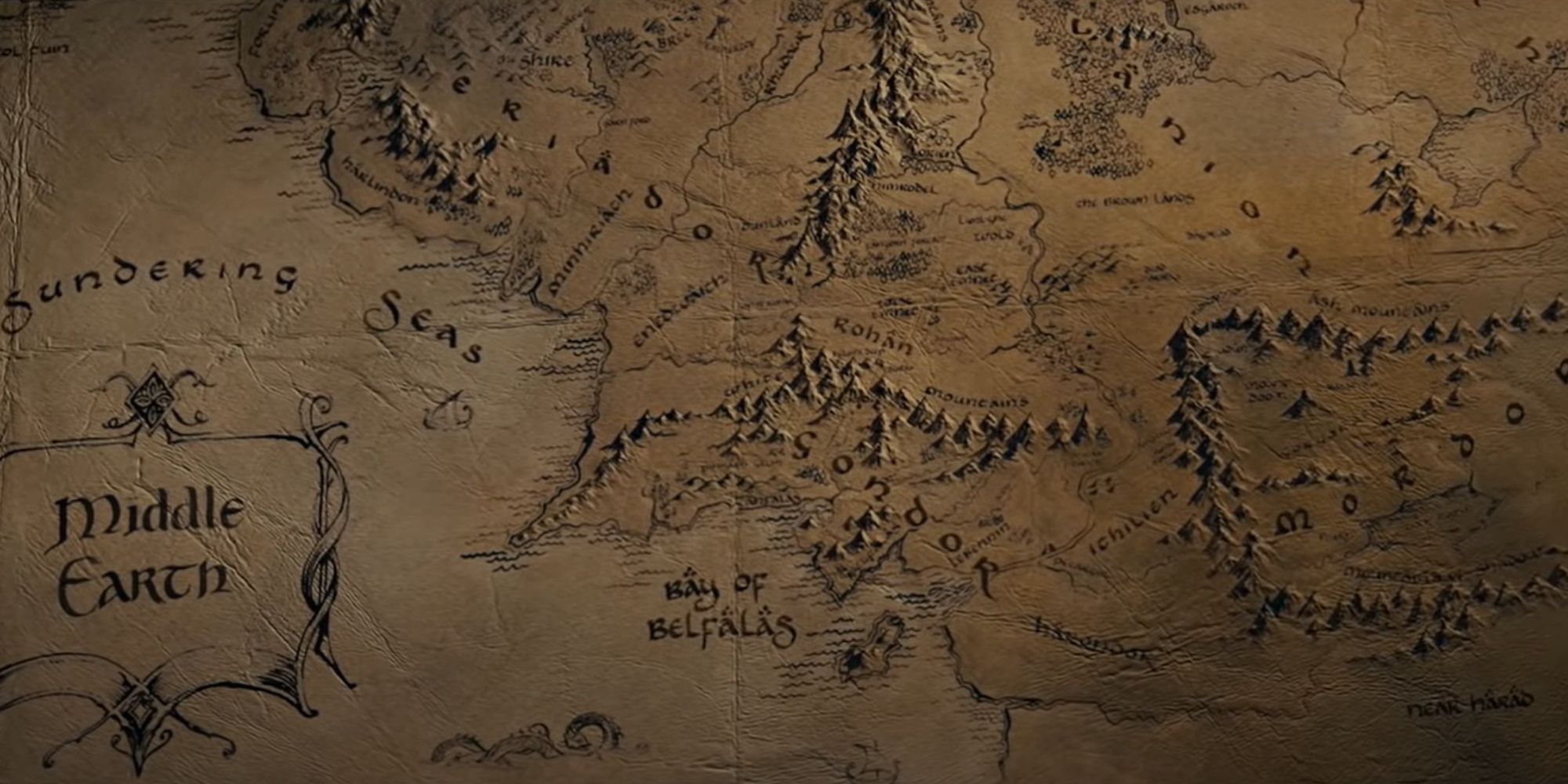
Sometimes, even the strangest conspiracy theories turn out to be true, just not in the way we always think. Take the flat-earth theory, for instance, where some believe that our world is secretly flat (a theory that is factually false). While that may not be the case in our world, you might be surprised to discover that it was true of J.R.R. Tolkien‘s Middle-earth. Seriously. When the world of Arda was originally created, it was actually flat, and remained so for the majority of the chronicled history of Tolkien’s high-fantasy world.
Yes, Middle-earth Used To Be Flat in the History of ‘Lord of the Rings’

If you didn’t already know, back when Eru Ilúvatar crafted the world of Arda, he did so by making it a flat-earth. This meant that the world floated as a flat plain through the cosmos. We get the further details of this creation account in The Silmarillion‘s “Ainulindalë” chapter, but learn something even more shocking as the Middle-earth narrative continues. After the First Age, Morgoth was defeated, and Sauron began rising into power. Throughout the Second Age, the Dark Lord influenced both Men and Elves for his own devices and set his sights on Númenor in particular. In the “Akallabêth: The Downfall of Númenor” portion of Tolkien’s mythology, we learn that Sauron (in his fair Annatar form) deceived the island kingdom into taking action against the Valar.
After years of persecuting the Faithful, they eventually set their sights on conquering Valinor. The Númenóreans set sail to the Undying Lands in an attempt to overthrow the Valar and attain immortality for themselves. But Eru Ilúvatar intervened. Not only did he cut off Valinor from the mortal plain, separating it from Arda, but he wiped out Númenor and all its people — save for Elendil (Lloyd Owen) and some of the Faithful — with a Great Wave. After this, he went a step further and changed the shape of the world, reforming it from its original flat state into a spherical earth. In “Changing the World,” Ilúvatar showed all of Middle-earth his power and hit the secrets of eternal life from Men. He also stripped Sauron of some of his shapeshifting abilities, and the Dark Lord was never able to take his Annatar appearance again.
Technically, ‘Rings of Power’ Is Set on a Flat Middle-earth (So Far)

If we consider the timeline of the Second Age as seen in The Rings of Power, it’s clear that the story has actually taken place on a flat earth all along. Though The Lord of the Rings itself takes place during the Third Age, meaning that Middle-earth is round during Frodo’s time, Rings of Power takes place strictly before the Downfall of Númenor, which means that Eru Ilúvatar has yet to change the world from one state into another. What does this mean for our heroes? Well, not much. As it stands right now, Valinor is relatively easy to get to as it still exists in the natural world, and living on a flat earth seems to have no effect as well.
Nevertheless, audiences should beware that we may see a shift in the map in the coming seasons, especially the closer Númenor gets to its extinction. Right now, Season 2 continues to propel the political shifts and moral decay that would eventually lead to Númenor’s destruction. As we wait for their final rebellion against the Valar, we can only wonder how Rings of Power will display such a massive world-changing event. Either way, it’ll be fun to watch.
The Lord of the Rings: The Rings of Power is available for streaming on Prime Video.





